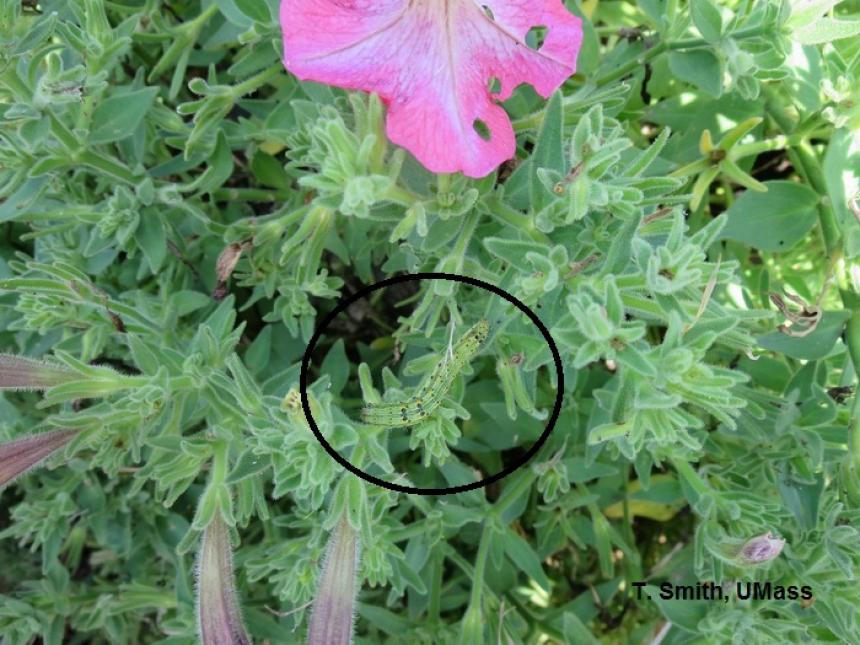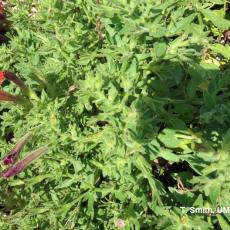Tobacco budworm feeds on buds and petals of geranium, calibrachoa and petunia. Tobacco budworms are generally a pest of home gardens and landscapes. However, adult moths can enter greenhouses with rollup sides, and lay their eggs on geranium or petunia buds. Caterpillars feed at night on flower buds, so that flowers fail to open. Petals may also be chewed. Fecal droppings may also be evident.
The adult is a moth about 1 1/2 inches wide with light green wings and 4 wavy, cream-colored bands. In the early evening, females lay single eggs on buds or undersides of leaves. Eggs hatch into tiny rust-colored or green striped caterpillars which eat holes in buds or unfolded leaves. The caterpillars become full-grown in about a month, drop to the soil and pupate. Adults emerge to repeat the cycle, with two generations normally produced each year here in the northeast. They over-winter as pupa below ground, 4-6 inches deep in an earthen cell. They survive temperatures as low as 20F.
Numbers tend to build up in the soil over time, especially when host plants such as petunias or geraniums are planted in the same bed year after year.
Monitor budworm by checking buds and flowers for small holes to detect early stages of infestation. Larvae are most active during dusk and best discovered at this time. During daylight hours, they often hide around the base of the plant.
Microbial insecticides such as Bacillus thuringiensis (B. t.) may be used against young, early instars, provided you can obtain good coverage. On plants such as geraniums where the caterpillars drill into the buds, B.t. may not be as effective. Against the older instar caterpillars, spinosad or spinosad combined with a pyrethroid may be an option.


